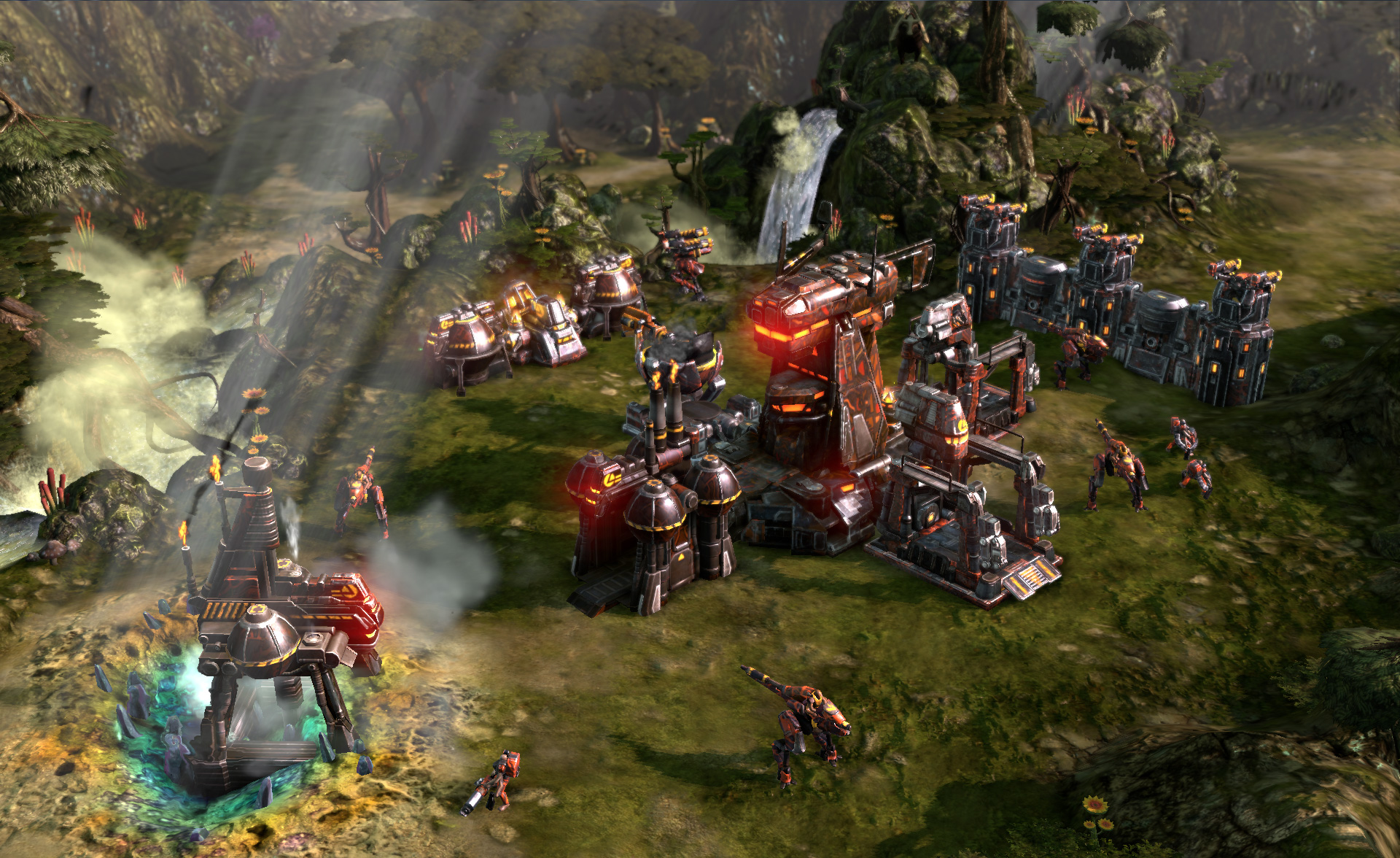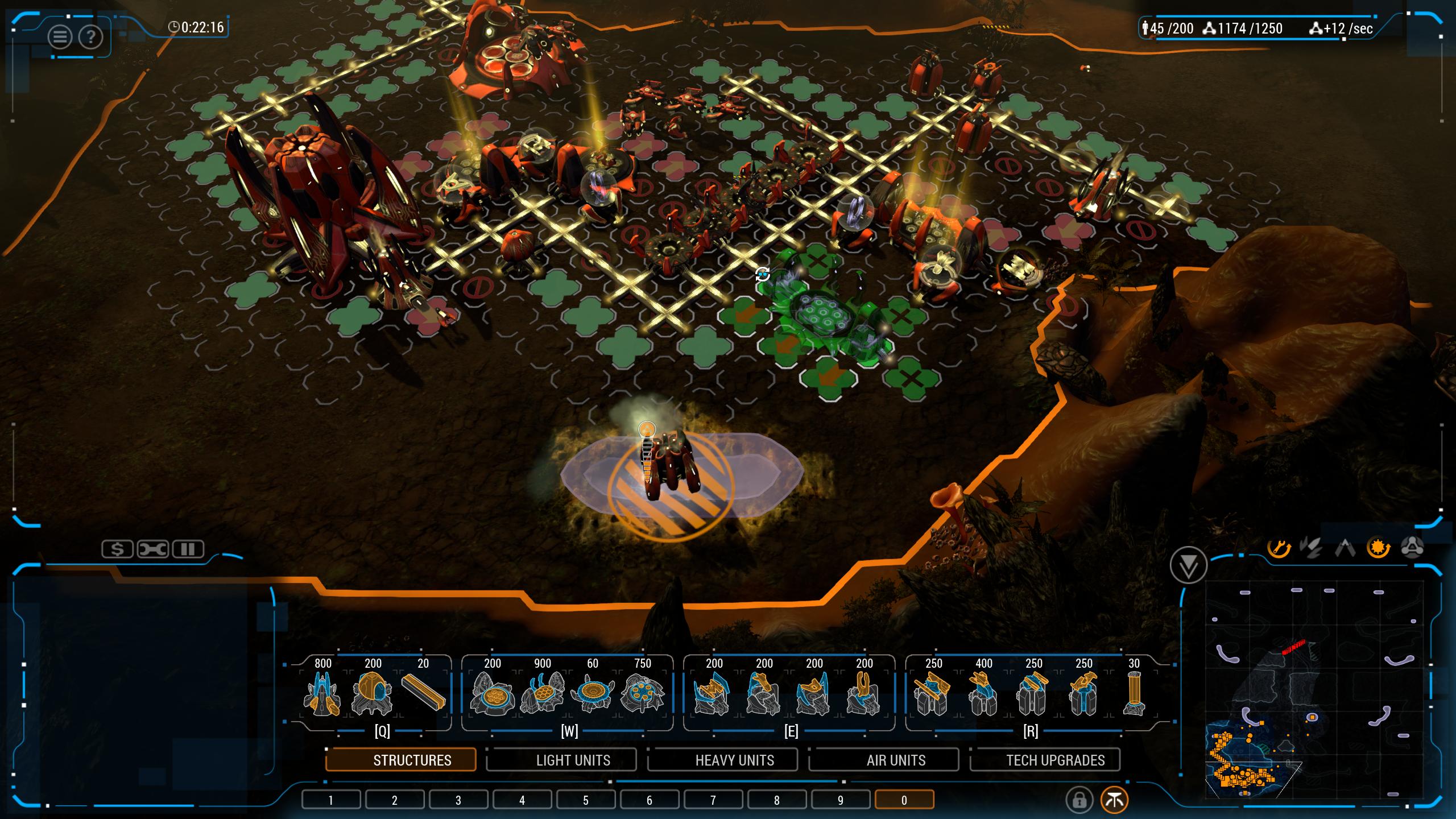
Grey Goo looks old-fashioned at first. Even after playing and enjoying early preview builds last winter and spring, I worried it would be too much of a throwback to a bygone era. It's one thing to enjoy a game at a hands-on preview, when you're surrounded by a cheerful development team and it's literally the only game on offer. It's harder to predict how well that experience will travel once you're at home, with nothing but time to discover flaws and shortcomings.
Grey Goo comes from Petroglyph Games, probably the most direct descendant of Command & Conquer creators Westwood Studios. The C&C style of RTS has gone out of fashion in recent years, done-in by increasingly underwhelming Command & Conquer sequels coming out of EA, and more complicated designs like Company of Heroes and StarCraft 2. But Grey Goo offers a rousing defense of the old formula, and reminded me what I loved about games like this in the first place.
Weta world
Grey Goo's campaign is a classic RTS campaign, full of cinematic cutscenes and talking-head mission briefings spliced between traditional RTS single-player levels. When the first cinematic started to play, I felt a little gust of dread, worried that once again we would descending into a Command & Conquer-style campfest. Or that it'd be hopelessly self-serious and incompetent, a B-level sci-fi story convinced that it was in Spielberg territory.
Instead, it was just… good. Grey Goo puts its connection to New Zealand's Weta Workshop to good use, with evocative designs for all the game's units, characters, and settings. The little two-minute movies that bookend most levels are always well-done, rapidly developing the plot, defining each faction, and raising the stakes for your missions. It's a little jarring when the aliens open their mouths and thick Australian accents come out, and some of the faces have an uncanny valley effect, but the disorientation passes quickly.
The cinematics help establish and emphasize the three distinctive faction designs that make Grey Goo so interesting. The Beta are the most conventional faction and, ironically, more humanized than the humans in the early part of the story. The campaign opens on the Beta as they stand on the verge of a major breakthrough after an implied exile from their homeworld, on the run from "the Silent Ones." But no sooner have they activated an interstellar portal then their old enemies come through it, and they instantly find themselves in a fight for their survival. Things go from terrible to apocalyptic at a breakneck pace, and the missions themselves likewise get you up to speed and playing with the full range of units and weapons as quicky as possible.
The Beta's humanized, industrial characterization echoes their faction design. They have to expand onto the map and call down power hubs to which their buildings can attach. The more they expand, the more territory they have to defend and the more decentralized their network becomes.
Meanwhile, the human faction is super high-tech. They use teleportation to produce buildings and can even reconfigure their base at-will, but the trade-off is that everything has to be connected to a central hub, so they can't really pop expansions onto the map. Their harvesters have to travel farther to reach resources, and their new units have to choose between marching a long way across the map or filing into teleporters with limited space and long cooldowns.
The biggest gaming news, reviews and hardware deals
Keep up to date with the most important stories and the best deals, as picked by the PC Gamer team.

In the end, then, the humans feel like an old 18th or 19th century colonial settlement deep inside hostile country. Inside the perimeter is safety and security and theoretically limitless defensive power. Beyond those walls, however, is a hard-to-control countryside that can swallow up an army that strays too far from aid.
The Goo are strangest faction of the bunch, and the one I'm struggling to get the hang-of. If the Beta expand onto the map and build lots of little bases, and the humans operate at a distance from one mega-base, the Goo don't have a base of any kind. The globs of nanomechanical goop, the Mother Goos, swarm around the map, vacuuming up resources and using them to spawn units. They're probably the most interesting faction, from a thematic and design perspective, but they're a nightmare for a dedicated turtler like me.
Playing the Goo is partly a shell-game as you try to keep your Mother Goos hidden from the enemy, but it's also a bit like being the Mongol horde sweeping out of the plains to level everything in your path. The Goo are wildly vulnerable and utterly devastating, all the same time. But controlling them requires some kind of Sun Tzu formlessness that I have yet to master.

